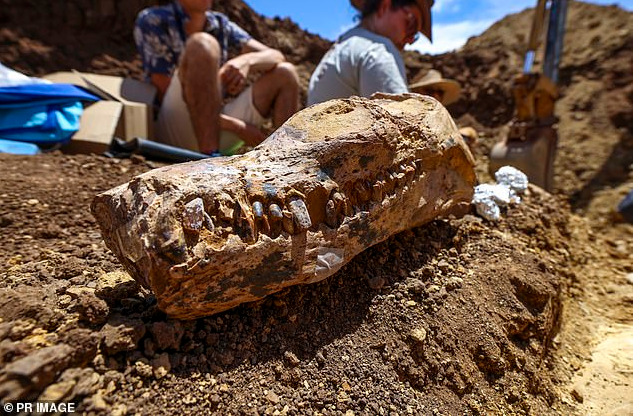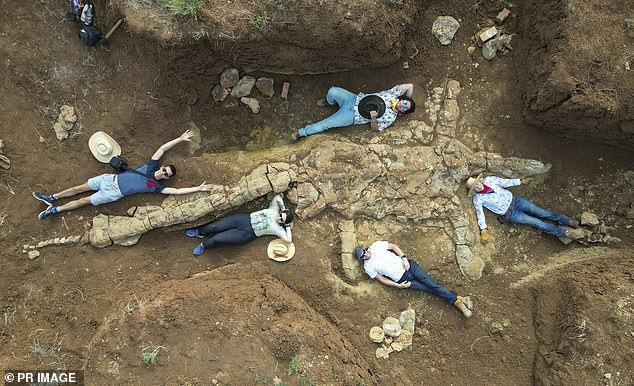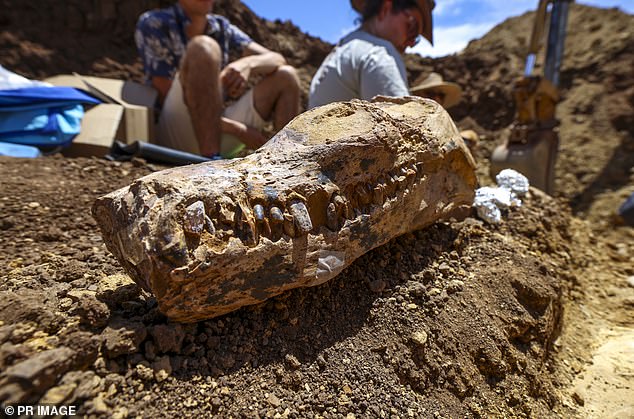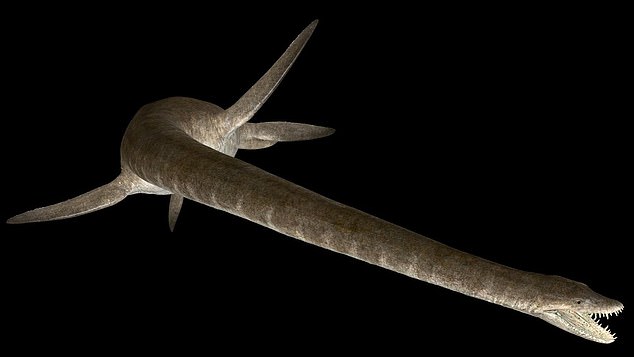
Fossil hunters discover remarkable ‘Rosetta Stone’ dinosaur skeleton from ancient Australian Inland Sea, 100 million years ago
Three amateur paleontologists have discovered the remains of a 100-million-year-old long-necked marine reptile at an outback station in Queensland.
For the first time in Australia, the complete skeleton of an ancient plesiosaur, or extinct marine reptile, has been discovered on a sprawling remote property in the McKinlay region.
The rare fossil was discovered by station owner Cassandra along with other amateur fossil sleuths Sally and Cynthia, known as the ‘Rock Chicks’.
The discovery has been described as the Rosetta Stone of marine reptile paleontology, a reference to the ancient carved stone discovered in Egypt in 1799 and believed to hold the key to deciphering Egyptian hieroglyphics.
A team of paleontologists from the museum traveled to the remote site to collect the fossil of the elasmosaur, a plesiosaur that lived alongside dinosaurs.
Elasmosaurus lived in the Eromanga Sea, which covered much of inland Australia between 140 and 100 million years ago.
The recovery was led by Queensland Museum Network senior scientist Dr Espen Knutsen, who said the remains were the first known head and body of an Australian elasmosaur to be preserved in a museum collection.

A team of paleontologists from the museum traveled to the remote site to collect the fossil of the elasmosaur, a plesiosaur that coexisted with the dinosaurs.

The remains are the first known head and body of an Australian elasmosaur to be preserved in a museum collection.
“We were very excited when we saw this fossil: it is like the Rosetta Stone of marine palaeontology, as it may hold the key to unraveling the diversity and evolution of long-necked plesiosaurs in Cretaceous Australia,” Dr Knutsen said.
“We have never found a body and a head together, and this could be the key to future research in this field.
There are currently more than one hundred species of plesiosaurs known around the world: some had long necks and small heads, and others had short necks with giant heads.
Elasmosaurus came to the surface of the water to breathe air and had thin teeth to capture fish, crabs and mollusks.
Scientists have discovered plesiosaur fossils with stones (called gastroliths) in the stomach area, showing that they swallowed them to grind food in the stomach or as ballast to aid in diving.
Dr Jim Thompson, chief executive of the Queensland Museum Network, said the find would help paint a complete picture of Queensland’s Cretaceous marine reptiles.
“We now have the only head and body of an Australian elasmosaur in the world, and this important find will greatly contribute to vital research into Queensland’s Cretaceous past,” Dr Thompson said.

Elasmosaurus lived in the Eromanga Sea, which covered much of inland Australia between 140 and 100 million years ago.
“Queensland’s museum network holds one of the most complete plesiosaur specimens in Australia, nicknamed ‘Dave the Plesiosaur’, which was discovered in 1999; However, despite having 80 percent of its bones, it was missing its head, fins and the tips of its tail.”
Along with the new skeleton, remains of plesiosaurs and ichthyosaurs were discovered and collected on the excursion, which will be transported to Townsville for preparation and future research.
The find is one of the largest discovered by amateur paleontologists, the Rock Chicks, who have walked hundreds of kilometers in their quest to uncover fossils that include one plesiosaur each, a kronosaurus, an ichthyosaur and several fish and turtles.




